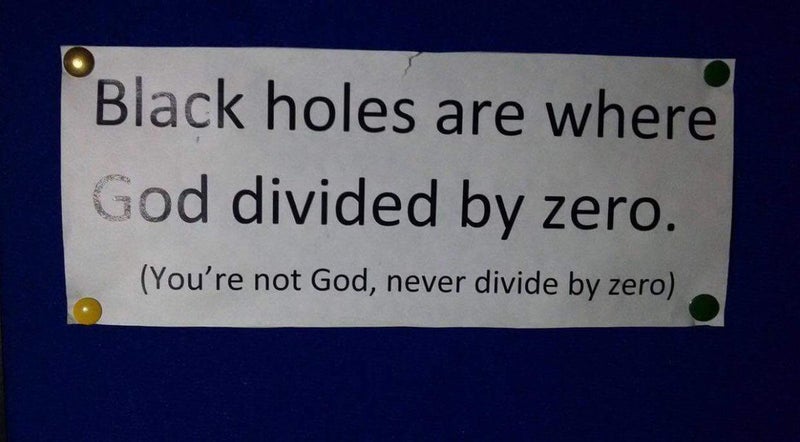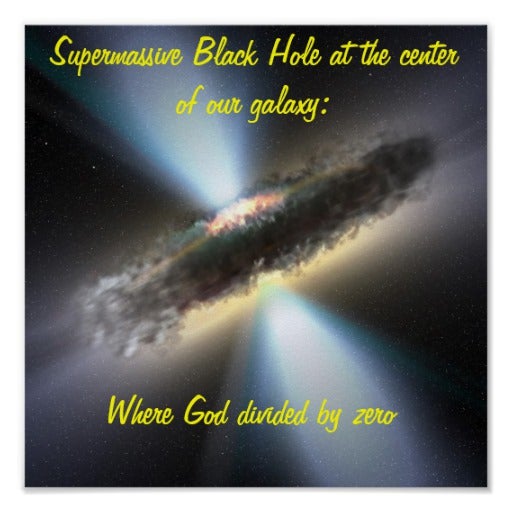え? どうする?」「お前いけよ!」 「イヤだよ」「なら、どうするんだよ?」 「お前がいけよ」「ええ!? 無理無理」 「わかった、俺がやる……」 って、感じ。
「ファーストペンギン」とは、集団で行動するペンギンの群れの中から、天敵がいるかもしれない海へ、魚を求めて最初に飛びこむ1羽のペンギンのこと。転じて、その“勇敢なペンギン”のように、リスクを恐れず初めてのことに挑戦するベンチャー精神の持ち主を、米国では敬意を込めて「ファーストペンギン」と呼びます。日本でも、NHKの朝の連続ドラマでそのエピソードが紹介され、広く一般に知られるようになりました。
(2016/2/29掲載)
(2016/2/29掲載)
リーダー不在の集団を導く“最初の1羽”
自分を信じリスクをとってチャンスを掴む
ペンギンは、多くの個体が隊列を組んで氷上を移動したり、エサの魚を囲い込んで捕食したり、つねに群れで固まり集団行動をとることで知られますが、実はそのペンギンの群れには、特定のリーダーがいません。例えば、群れに何らかの危険が迫った場合は、いち早く察知した1羽の後に続くことで、まわりもいっしょに難を逃れます。強いボスやリーダーではなく、“最初の1羽”に従うのが彼らの集団行動の特徴なのです。
この習性は、ふだん陸上で過ごすペンギンたちが、エサの魚を採るために海へ入るときにも発揮されます。集団性が強いので、群れの中の誰かが海に入るまでは、みんな氷上にとどまって動きませんが、誰か1羽でも先陣を切って飛び込めば、後に続けとばかりに次々と海に入っていくのです。そこにはシャチやトド、オットセイなど、恐ろしい天敵が待ち受けているかもしれません。生命の危険を顧みず、真っ先に飛び込んだペンギンは、身をもってその海が安全であると仲間に示す一方、そうすることで誰よりも確実に、お腹いっぱいのエサにありつくチャンスを得るわけです。
ハイリスク・ハイリターンは、人間社会の生存競争にも通じる理でしょう。ビジネスの世界では、かつて誰も足を踏み入れたことのない領域に挑むベンチャー企業の創業者や、イノベーションを引き起こすプロフェッショナルのことを、この勇敢な“最初の1羽”になぞらえて、「ファーストペンギン」と呼びます。米国の学生にキャリア観を尋ねると、最上位に「起業家」が挙がるのは、幼い頃から「人と同じでなく、ファーストペンギンを目指しなさい」という教育が徹底されているからです。インターネットの技術が世の中に現れたばかりの頃、それが近い将来、社会を大きく変え、人々の生活になくてはならないものになると想像した人はどれくらいいたでしょうか。このとき、自分を信じ、リスクをとって海に飛び込んだファーストペンギンたちが、いまや時価総額トップレベルの世界的IT企業をつくり、業界全体のイニシアティブさえ握っているのです。
「ファーストペンギン」という言葉は、NHKの朝の連続テレビ小説「あさが来た」にも登場し、話題になりました。ドラマのヒロイン「白岡あさ」のモデルとなった広岡浅子は、明治時代を代表する女性実業家。当時新しい産業として注目されていた炭鉱業にいち早く進出したほか、銀行や生命保険会社、日本で初の女子大学の設立に尽力するなど、女性が社会の表舞台へ出ること自体がまれな時代に、次々と新しい冒険的事業へ乗り出していきました。まさに、日本の誇るファーストペンギンの一人でしょう。https://jinjibu.jp/keyword/detl/773/
とても興味深く読みました:
\documentclass[12pt]{article}
\usepackage{latexsym,amsmath,amssymb,amsfonts,amstext,amsthm}
\numberwithin{equation}{section}
\begin{document}
\title{\bf Announcement410 : What is mathematics? -- beyond logic; for great challengers on the division by zero\\
(2018.1.30.)}
\author{{\it Institute of Reproducing Kernels}\\
Kawauchi-cho, 5-1648-16,\\
Kiryu 376-0041, Japan\\
}
\date{\today}
\maketitle
The Institute of Reproducing Kernels is dealing with the theory of division by zero calculus and declares that the division by zero was discovered as $0/0=1/0=z/0=0$ in a natural sense on 2014.2.2. The result shows a new basic idea on the universe and space since Aristotelēs (BC384 - BC322) and Euclid (BC 3 Century - ), and the division by zero is since Brahmagupta (598 - 668 ?).
In particular, Brahmagupta defined as $0/0=0$ in Brāhmasphuṭasiddhānta (628), however, our world history stated that his definition $0/0=0$ is wrong over 1300 years, but, we showed that his definition is suitable.
For the details, see the references and the site: http://okmr.yamatoblog.net/
We wrote a global book manuscript \cite{s18} with 154 pages
and stated that the division by zero is trivial and clear, and in the last section of the manuscript we stated as follows:
\bigskip
\bigskip
{\bf Conclusion}
\medskip
Apparently, the common sense on the division by zero with a long and mysterious history is wrong and our basic idea on the space around the point at infinity is also wrong since Euclid. On the gradient or on derivatives we have a great missing since $\tan (\pi/2) = 0$. Our mathematics is also wrong in elementary mathematics on the division by zero.
This book is an elementary mathematics on our division by zero as the first publication of books for the topics. The contents have wide connections to various fields beyond mathematics. The author expects the readers write some philosophy, papers and essays on the division by zero from this simple source book.
The division by zero theory may be developed and expanded greatly as in the author's conjecture whose break theory was recently given surprisingly and deeply by Professor Qi'an Guan \cite{guan} since 30 years proposed in \cite{s88} (the original is in \cite {s79}).
We have to arrange globally our modern mathematics with our division by zero in our undergraduate level.
We have to change our basic ideas for our space and world.
We have to change globally our textbooks and scientific books on the division by zero.
\bigskip
However, we have still curious situations and opinions for us on the division by zero; in particular, the two great challengers Jakub Czajko and Ilija Barukčić on the division by zero in connection with physics stated that we do not have the definition of the division $0/0$, however $0/0=1$.
They seem to think that a truth is based on physical objects and is not on our mathematics. In such a cases, we will not be able to continue discussions on the division by zero more, because for mathematicians, they will not be able to follow their logics more. However, then we will ask for the question that what are the values and contributions of your articles and discussions. We will expect some contributions, of course.
This question will reflect to mathematicians contrary. We stated for the estimation of mathematisc in \cite{s97}: Mathematics is the collection of relations and, good results are fundamental,
beautiful, and give
great good impacts to human beings.
With this estimation, we stated that the Euler formula
$$
e^{\pi i} = -1
$$
is the best result in mathematics in details in:
\medskip
No.81, May 2012(pdf 432kb)
www.jams.or.jp/kaiho/kaiho-81.pdf
\medskip
In order to show the importance of our division by zero and division by zero calculus we are requested to show their importance.
It seems that the long and mysterious confusions for the division by zero is on the definition. --
Indeed, when we consider the division by zero $a/0$ in the usual sense of the fundamental equation $0 \cdot z= a$, we have immediately the simple contradiction, however, we have such cases may happen, in particular, in mathematical formulas and physical formulas on the universe.
\bibliographystyle{plain}
\begin{thebibliography}{10}
\bibitem{bar}
I. Barukčić,
Dialectical Logic – Negation Of Classical Logic,
http://vixra.org/abs/1801.0256
\bibitem{jake}
J. Czajko, Algebraic division by zero implemented as quasigeometric multiplication by infinity in real and complex multispatial hyperspaces,
Available online at www.worldscientificnews.com
WSN 92(2) (2018) 171-197
\bibitem{guan}
Q. Guan, A proof of Saitoh's conjecture for conjugate Hardy H2 kernels, arXiv:1712.04207.
\bibitem{kmsy}
M. Kuroda, H. Michiwaki, S. Saitoh, and M. Yamane,
New meanings of the division by zero and interpretations on $100/0=0$ and on $0/0=0$,
Int. J. Appl. Math. {\bf 27} (2014), no 2, pp. 191-198, DOI: 10.12732/ijam.v27i2.9.
\bibitem{ms16}
T. Matsuura and S. Saitoh,
Matrices and division by zero z/0=0,
Advances in Linear Algebra \& Matrix Theory, {\bf 6}(2016), 51-58
Published Online June 2016 in SciRes. http://www.scirp.org/journal/alamt
\\ http://dx.doi.org/10.4236/alamt.2016.62007.
\bibitem{ms18}
T. Matsuura and S. Saitoh,
Division by zero calculus and singular integrals. (Submitted for publication)
\bibitem{mms18}
T. Matsuura, H. Michiwaki and S. Saitoh,
$\log 0= \log \infty =0$ and applications. Differential and Difference Equations with Applications. Springer Proceedings in Mathematics \& Statistics.
\bibitem{msy}
H. Michiwaki, S. Saitoh and M.Yamada,
Reality of the division by zero $z/0=0$. IJAPM International J. of Applied Physics and Math. {\bf 6}(2015), 1--8. http://www.ijapm.org/show-63-504-1.html
\bibitem{mos}
H. Michiwaki, H. Okumura and S. Saitoh,
Division by Zero $z/0 = 0$ in Euclidean Spaces,
International Journal of Mathematics and Computation, {\bf 2}8(2017); Issue 1, 2017), 1-16.
\bibitem{osm}
H. Okumura, S. Saitoh and T. Matsuura, Relations of $0$ and $\infty$,
Journal of Technology and Social Science (JTSS), {\bf 1}(2017), 70-77.
\bibitem{os}
H. Okumura and S. Saitoh, The Descartes circles theorem and division by zero calculus. https://arxiv.org/abs/1711.04961 (2017.11.14).
\bibitem{o}
H. Okumura, Wasan geometry with the division by 0. https://arxiv.org/abs/1711.06947 International Journal of Geometry.
\bibitem{os18}
H. Okumura and S. Saitoh,
Applications of the division by zero calculus to Wasan geometry.
(Submitted for publication).
\bibitem{ps18}
S. Pinelas and S. Saitoh,
Division by zero calculus and differential equations. Differential and Difference Equations with Applications. Springer Proceedings in Mathematics \& Statistics.
\bibitem{romig}
H. G. Romig, Discussions: Early History of Division by Zero,
American Mathematical Monthly, Vol. {\bf 3}1, No. 8. (Oct., 1924), pp. 387-389.
\bibitem{s97}
T. M. Rassias, Editor, Nonlinear Mathematical Analysis and Applications, HadronicPress,Palm Harbor,FL34682-1577,USA:ISBN1-57485-044-X,1998, pp.223–234: Nonlinear transforms and analyticity of functions, Saburou Saitoh.
\bibitem{s79}
S. Saitoh, The Bergman norm and the Szeg$\ddot{o}$ norm, Trans. Amer. Math. Soc. {\bf 249} (1979), no. 2, 261--279.
\bibitem{s88}
S. Saitoh, Theory of reproducing kernels and its applications. Pitman Research Notes in Mathematics Series, {\bf 189}. Longman Scientific \& Technical, Harlow; copublished in the United States with John Wiley \& Sons, Inc., New York, 1988. x+157 pp. ISBN: 0-582-03564-3
\bibitem{s14}
S. Saitoh, Generalized inversions of Hadamard and tensor products for matrices, Advances in Linear Algebra \& Matrix Theory. {\bf 4} (2014), no. 2, 87--95. http://www.scirp.org/journal/ALAMT/
\bibitem{s16}
S. Saitoh, A reproducing kernel theory with some general applications,
Qian,T./Rodino,L.(eds.): Mathematical Analysis, Probability and Applications - Plenary Lectures: Isaac 2015, Macau, China, Springer Proceedings in Mathematics and Statistics, {\bf 177}(2016), 151-182. (Springer) .
\bibitem{s17}
S. Saitoh, Mysterious Properties of the Point at Infinity、
arXiv:1712.09467 [math.GM](2017.12.17).
\bibitem{s18}
S. Saitoh, Division by zero calculus (154 pages: draft): (http://okmr.yamatoblog.net/)
\bibitem{ttk}
S.-E. Takahasi, M. Tsukada and Y. Kobayashi, Classification of continuous fractional binary operations on the real and complex fields, Tokyo Journal of Mathematics, {\bf 38}(2015), no. 2, 369-380.
\end{thebibliography}
\end{document}



































0 件のコメント:
コメントを投稿